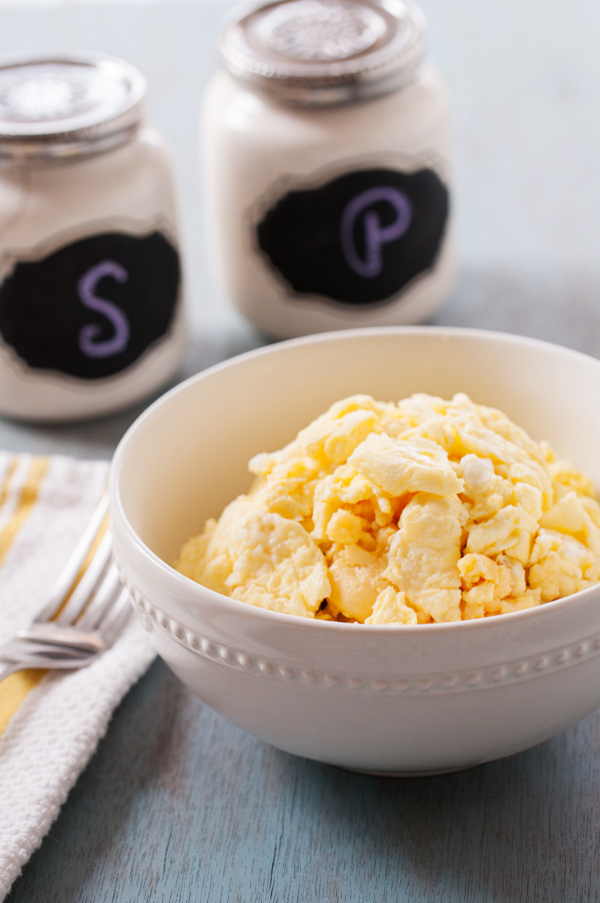 Welcome to part 2 of the How Do you Like Your Eggs? series. If you missed the first part, which talked about three ways Thai people prepare eggs, check it out here!
Welcome to part 2 of the How Do you Like Your Eggs? series. If you missed the first part, which talked about three ways Thai people prepare eggs, check it out here!
Today, I’ll discuss how to optimally prepare a hard-boiled egg, scrambled eggs, and egg pudding (a Thai delicacy).
Let’s start with the hard-boiled egg. When I was younger, a hard-boiled egg was one of the first items I learned how to cook. Mainly because it was so hard to mess up. You basically just let eggs come to a boil and leave it there for a really long time (~20 minutes), right? No matter what, it comes out hard-boiled. The color of the yolk didn’t matter, the tough white didn’t matter, it came out solid and it was edible. Only until a few years ago, when I was in grad school, did I find out the science behind cooking a hard-boiled egg. Did you know that overcooking a hard-boiled egg is what causes the greenish/grayish tint on the surface of the cooked yolk? The discoloration is actually ferrous sulfide, caused from a reaction between sulfur in the white and iron in the yolk, promoted by high temperature and prolonged cooking. So that you don’t have to go through years eating a discolored yolk, I am here to report, after multiple tests, that 14 minutes in boiling water, followed by a shock in an ice-water bath to stop the cooking, was the perfect cook time to get a tender white and a clean light yellow yolk.
No matter your experience level in cooking a hard-boiled egg, you’ve probably experienced the devastation when your cooked egg doesn’t peel easily and results in a crater-filled white surface. Tragic. Guess what…It’s because the eggs are fresh! In any other circumstance, fresh eggs are the way to go, but not with hard-boiled eggs. As eggs age, carbonic acid in the white and yolk gets released in it’s gaseous form, carbon dioxide, through the porous shell. As this occurs, the pH of both the yolk and white increases and the egg becomes alkaline. Shells adhering to whites is characteristic of a low pH (acidic) egg (fresh egg). For eggs to peel easily, you need a high pH (alkaline) environment. If you only have fresh eggs on hand, create an alkaline bath for your eggs by adding some baking soda to your boiling water. A ½ tsp (half-teaspoon) of baking soda for every quart (4 cups) of water is all you need. Works every time! The peel practically falls off!
But, how do you know if your egg is fresh or old? In addition to loss of gas, moisture is lost in the aging process. When moisture is lost, the air pocket located at the wide end of the egg expands and the egg becomes less dense. Test the freshness of the egg by dropping it in a glass of water, lined at the bottom with a wad of paper towel (to prevent cracking from the drop). If it automatically sinks, it’s fresh. If the wide end rises higher than the narrow end, the egg is older. If the egg floats, it is very old, so throw it out.
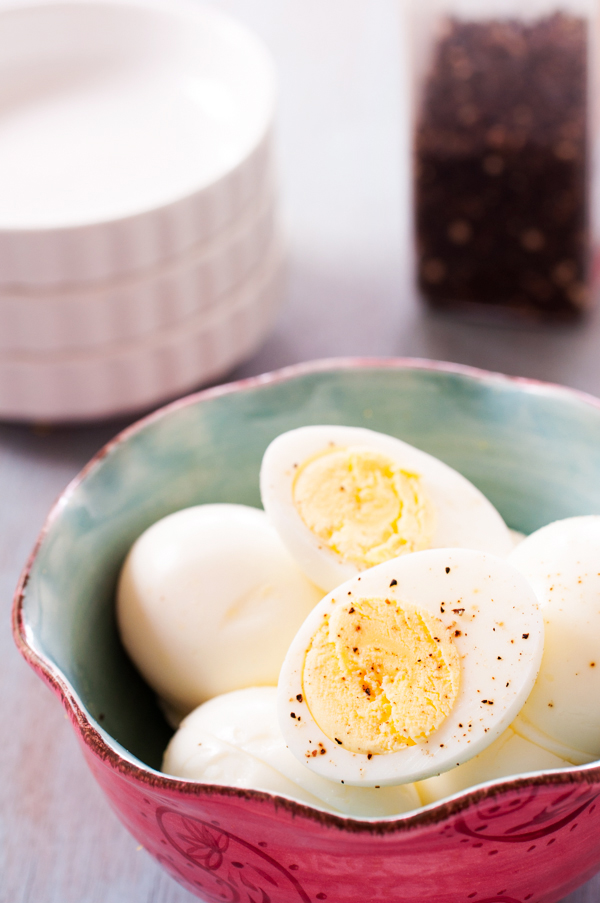 Had enough of the science stuff? OK, let’s move on to egg pudding. In Thai, it’s called kai tun, and is essentially steamed diluted scrambled eggs. This is eaten as an occasional side dish to Thai dinners, mainly prepared when it’s prepared. We would have it whenever fried fish and some sort of soup was for dinner, but that was just our family. I find that the best way to enjoy this pudding is by sprinkling over a little soy sauce and eating it concurrently with rice in one bite. It is delicate, savory, and most importantly, satisfying!
Had enough of the science stuff? OK, let’s move on to egg pudding. In Thai, it’s called kai tun, and is essentially steamed diluted scrambled eggs. This is eaten as an occasional side dish to Thai dinners, mainly prepared when it’s prepared. We would have it whenever fried fish and some sort of soup was for dinner, but that was just our family. I find that the best way to enjoy this pudding is by sprinkling over a little soy sauce and eating it concurrently with rice in one bite. It is delicate, savory, and most importantly, satisfying!
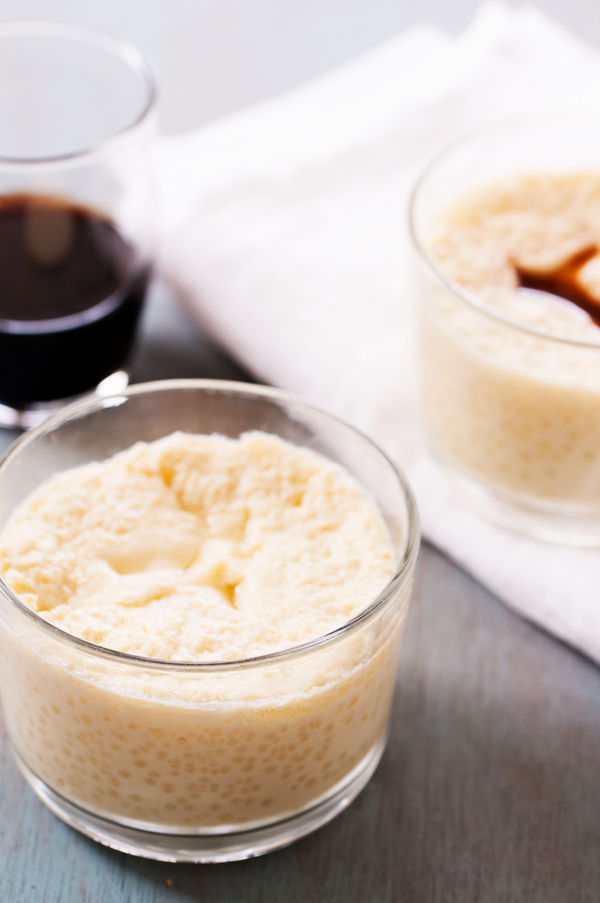 The traditional way of preparation is by inverting a vegetable steamer in a large pot of boiling water and placing a bowl of the egg mixture on top of the steamer. Cover and steam for 12 minutes. Check for doneness by poking a hole with a skewer. If no egg mixture fills the hole, it’s finished. A little moisture on the surface is fine and is expected from the steam. I find that using the inverted vegetable steamer causes a slightly tilted bowl, which steams the egg on a slight slant. Since I wanted my eggs to be perfectly level, I used the vegetable steamer that came with my pasta cooker/steamer set, similar to this one. Worked like a charm!
The traditional way of preparation is by inverting a vegetable steamer in a large pot of boiling water and placing a bowl of the egg mixture on top of the steamer. Cover and steam for 12 minutes. Check for doneness by poking a hole with a skewer. If no egg mixture fills the hole, it’s finished. A little moisture on the surface is fine and is expected from the steam. I find that using the inverted vegetable steamer causes a slightly tilted bowl, which steams the egg on a slight slant. Since I wanted my eggs to be perfectly level, I used the vegetable steamer that came with my pasta cooker/steamer set, similar to this one. Worked like a charm!
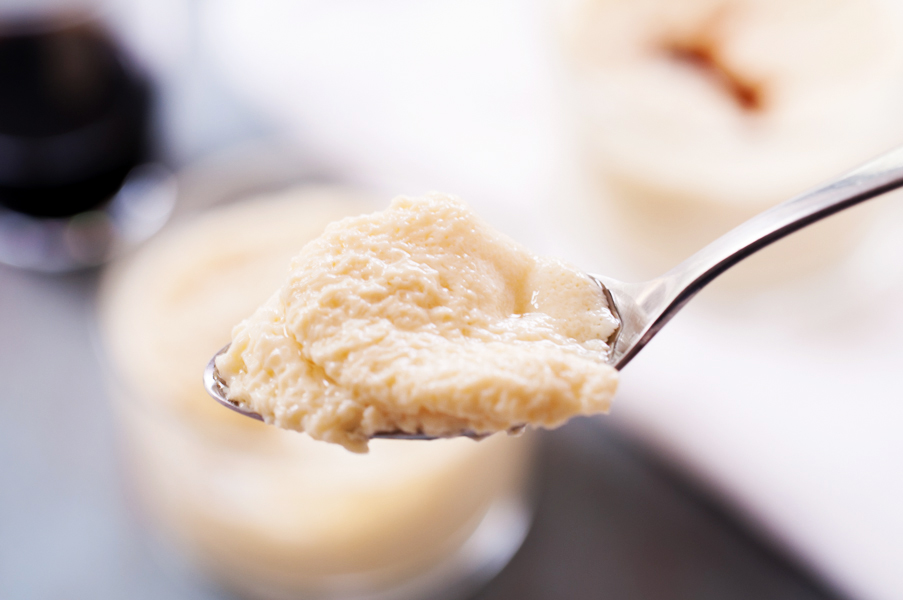 Now, for the scrambled eggs. Scrambled eggs was also one of the first things I learned to cook as a child. I beat the eggs and moved it around a greased pan over heat. What could be easier? Well, it turns out there is a technique for that too. Go figure. I’ve heard of adding milk and adding water to the beaten eggs. I found that adding whole milk to the eggs makes it creamier and produces more flavorful eggs. Removing it from the pan while mostly cooked (some spots of glistening egg batter) is also imperative to achieve soft and fluffy eggs. Don’t worry, it will continue to cook from the residual heat.
Now, for the scrambled eggs. Scrambled eggs was also one of the first things I learned to cook as a child. I beat the eggs and moved it around a greased pan over heat. What could be easier? Well, it turns out there is a technique for that too. Go figure. I’ve heard of adding milk and adding water to the beaten eggs. I found that adding whole milk to the eggs makes it creamier and produces more flavorful eggs. Removing it from the pan while mostly cooked (some spots of glistening egg batter) is also imperative to achieve soft and fluffy eggs. Don’t worry, it will continue to cook from the residual heat.
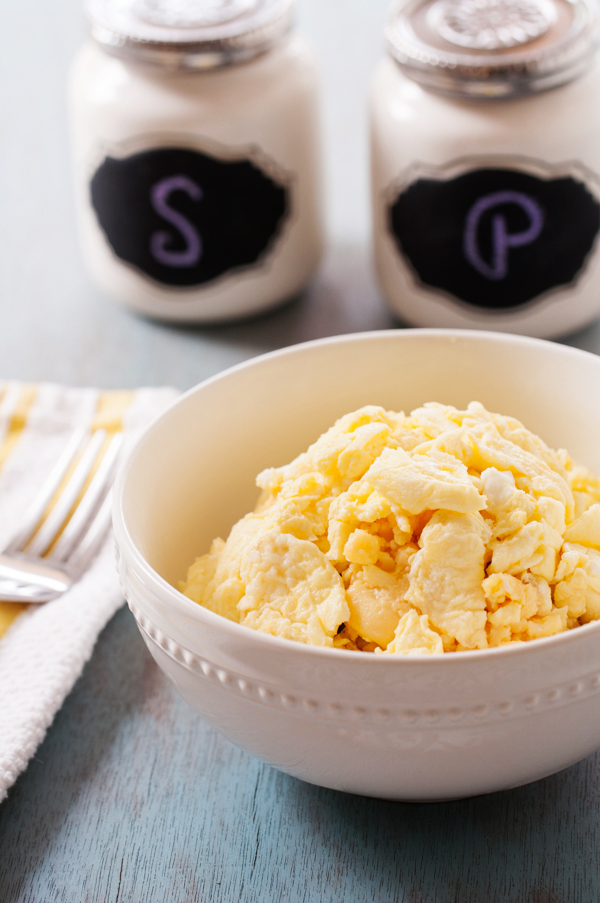 There you have it. Three more ways to add to your arsenal of egg preparation. Come back next week for part 3 of the series where I prepare poached, sunny side up, and over easy eggs.
There you have it. Three more ways to add to your arsenal of egg preparation. Come back next week for part 3 of the series where I prepare poached, sunny side up, and over easy eggs.
Note: This post contains affiliate links that help make The PKP Way possible.
Hard-Boiled Eggs
Ingredients
- Old eggs*
- Boiling water
- ½ tsp half-teaspoon of baking soda for every quart (4 cups) of water (only if using fresh eggs)
- Ice-water bath
Instructions
- Add eggs to a large pot
- Pour in the water in 1 quart (4 cups) increments until the water covers the eggs.
- If using fresh eggs, remove the eggs and stir in the baking soda, and replace the eggs. If using old eggs, leave the eggs in the pot and omit the baking soda.
- Bring the water to a boil over medium-high heat.
- Off the heat and cover for 14 minutes.
- Remove the eggs and shock in an ice-water bath.
- Crack and peel.
Notes
Egg Pudding
Ingredients
- 2 fresh eggs
- Water
- 2 teaspoons of soy sauce
Instructions
Inverted vegetable steamer method
- Invert the vegetable steamer in a large pot.
- Add enough water to cover half of the steamer.
- Cover and allow the water to come to a boil over high heat.
- In a glass liquid-measuring cup, crack in the eggs.
- Lightly whisk the eggs and make note of the volume of eggs
- Add the same volume of water as the eggs (1:1 ratio).
- Add soy sauce
- Whisk until pale in color and foamy.
- Pour the mixture into a bowl that can sit on top of the inverted steamer and the pot can still be covered.
- Lightly skim the foam from the surface with a small spoon. This will create as smooth a surface as possible.
- Place the bowl on the steamer over the boiling water (be careful of the hot steam).
- Cover and steam for 12 minutes*.
Pasta cooker/steamer method
- Remove the vegetable steamer and the pasta strainer from the pot.
- Fill the pasta cooker pot half way with water. Cover and bring to a boil over high heat.
- In a glass liquid-measuring cup, crack in the eggs.
- Lightly whisk the eggs and make note of the volume of eggs
- Add the same volume of water as the eggs (1:1 ratio).
- Add 2 teaspoons of soy sauce
- Whisk until pale in color and foamy.
- Pour the mixture into a bowl or divide into ramekins that can fit in the steamer and the pot can still be covered.
- Lightly skim the foam from the surface with a small spoon. This will create as smooth a surface as possible.
- Replace the steamer into the pot of boiling water (be careful of the hot steam).
- Cover and steam for 12 minutes*.
Notes
Scrambled Eggs
Ingredients
- 1 tablespoon salted butter
- 2 fresh eggs
- 2 tablespoons whole milk
- Salt and pepper optional
Instructions
- Heat the butter in a skillet over medium-low heat.
- Whisk the eggs and milk in a medium bowl until just incorporated. Do not over beat.
- When the butter is melted and foamy (tiny bubbles will form and pop), add in the egg mixture.
- Let the egg set for about 10-15 seconds (the edges should become thin and slightly crispy, but the middle should still be liquid)
- With a spatula, begin from the outer edge and bring to the middle a streak of egg. Repeat around the circumference of the skillet until all the egg is in the middle. The egg should still be slightly underdone. Use the spatula to break up any wide ribbons.
- When the eggs are mostly cooked (some spots of glistening egg batter), off the heat, remove eggs from the pan and serve.
- Add salt and pepper to taste.





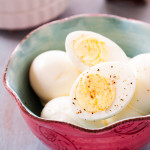
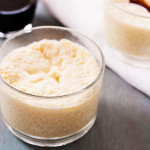
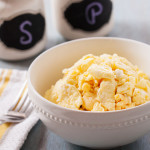
Literally had no idea how versatile eggs were. *golf clap*